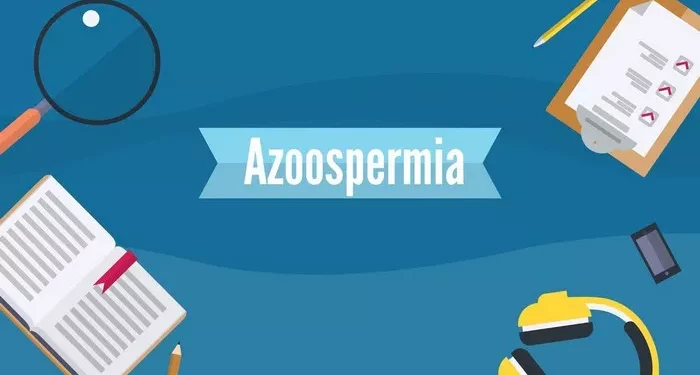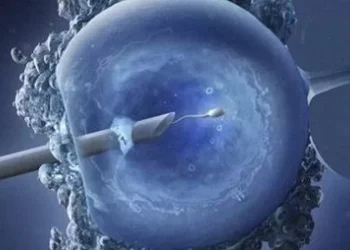Azoospermia is a medical condition characterized by the complete absence of sperm in the ejaculate. This condition is a significant cause of male infertility and can be a result of various underlying issues affecting sperm production or delivery. The lack of sperm can stem from pre-testicular, testicular, or post-testicular causes, each with distinct etiologies and implications for treatment.
Azoospermia affects approximately 1% of all men and accounts for about 10-15% of cases among men seeking infertility treatment. It is one of the more severe forms of male infertility and often requires specialized diagnostic and therapeutic approaches to address the underlying causes and manage the condition effectively.
Types of Azoospermia
Pre-testicular Azoospermia
Pre-testicular azoospermia, also known as secondary testicular failure, is caused by hormonal or genetic issues that disrupt the production of sperm before it reaches the testes.
Hormonal Issues
Pre-testicular azoospermia can arise from insufficient levels of the hormones necessary for sperm production, such as follicle-stimulating hormone (FSH) and luteinizing hormone (LH). Conditions like hypogonadotropic hypogonadism, where there is a deficiency in these hormones, can lead to inadequate stimulation of the testes, resulting in no sperm production.
Genetic Issues
Genetic conditions, such as Kallmann syndrome, can also lead to pre-testicular azoospermia. Kallmann syndrome is characterized by a lack of GnRH (gonadotropin-releasing hormone) production, which in turn affects the release of FSH and LH from the pituitary gland.
Testicular Azoospermia
Testicular azoospermia, also referred to as primary testicular failure, occurs when there is an intrinsic problem within the testes that prevents sperm production.
Genetic Conditions
Conditions such as Klinefelter syndrome (47, XXY karyotype) and Y chromosome microdeletions can impair spermatogenesis directly. Men with Klinefelter syndrome typically have small, firm testes and elevated gonadotropin levels due to impaired testicular function.
Infections
Mumps orchitis, a complication of mumps virus infection, can lead to significant testicular damage and result in azoospermia. Other infections, such as sexually transmitted infections (STIs), can also cause scarring and damage to the testicular tissue.
Trauma and Torsion
Physical trauma to the testes or testicular torsion, where the spermatic cord twists and cuts off blood supply to the testes, can result in irreversible damage and subsequent azoospermia if not promptly treated.
Post-testicular Azoospermia
Post-testicular azoospermia, also known as obstructive azoospermia, occurs when sperm is produced in the testes but cannot be ejaculated due to blockages or congenital absence of the vas deferens.
Blockages
Blockages in the epididymis, vas deferens, or ejaculatory ducts can prevent sperm from mixing with the ejaculate. These blockages can be due to infections, surgeries, or congenital abnormalities.
See also: Natural Remedies for Azoospermia: Things You Need To Know
Absence of Vas Deferens
A congenital absence of the vas deferens (CAVD) is often associated with cystic fibrosis (CF) or CFTR gene mutations. Men with CF or CFTR mutations typically produce sperm normally, but the sperm cannot be transported to the ejaculate due to the absence of these crucial ducts.
Causes
The causes of azoospermia are diverse and can include genetic abnormalities, hormonal imbalances, physical blockages, and previous surgeries.
Genetic Abnormalities
1. Klinefelter Syndrome: Men with this condition have an extra X chromosome, leading to impaired testicular function and often resulting in azoospermia.
2. Y Chromosome Microdeletions: Certain deletions in the Y chromosome are associated with severe spermatogenic failure.
3. CFTR Mutations: Mutations in the CFTR gene are linked to CAVD and obstructive azoospermia.
Hormonal Imbalances
1. Hypogonadotropic Hypogonadism: A deficiency in GnRH, FSH, and LH leads to inadequate stimulation of the testes.
2. Hyperprolactinemia: Elevated levels of prolactin can inhibit GnRH secretion, affecting the production of FSH and LH.
Blockages in the Reproductive Tract
1. Epididymal or Vas Deferens Blockages: Infections, trauma, or congenital conditions can cause blockages, preventing sperm transport.
2. Ejaculatory Duct Obstruction: Can result from infections, trauma, or congenital abnormalities.
Previous Surgeries
1. Vasectomy: A common cause of obstructive azoospermia, where the vas deferens is surgically cut to prevent sperm from reaching the ejaculate.
2. Surgeries for Inguinal Hernias: Can sometimes lead to damage or obstruction of the vas deferens.
Symptoms
Azoospermia itself is typically asymptomatic and often discovered during an infertility evaluation. However, underlying causes may present with specific symptoms:
1. Hormonal Imbalances: Symptoms can include decreased libido, erectile dysfunction, and gynecomastia.
2. Infections: Pain, swelling, and fever may indicate an underlying infection.
3. Genetic Conditions: Physical characteristics like small testes in Klinefelter syndrome or the presence of respiratory issues in cystic fibrosis.
Diagnosis
Diagnosing azoospermia involves a series of evaluations to determine the underlying cause.
Semen Analysis
The initial step is a semen analysis, which confirms the absence of sperm in the ejaculate. The analysis is typically repeated to ensure accuracy.
Hormone Testing
Blood tests are conducted to measure levels of FSH, LH, testosterone, and prolactin. Elevated FSH and LH with low testosterone suggest primary testicular failure, while low levels indicate potential hypothalamic or pituitary issues.
Genetic Screening
Genetic tests may be recommended to identify conditions like Klinefelter syndrome, Y chromosome microdeletions, and CFTR mutations.
Testicular Biopsy
A testicular biopsy can differentiate between obstructive and non-obstructive azoospermia by examining the presence of spermatogenesis within the testicular tissue.
Treatment Options
Obstructive Azoospermia
Surgical Procedures
1. Vasovasostomy: Reversal of vasectomy to restore sperm flow.
2. Vasoepididymostomy: Connecting the vas deferens directly to the epididymis to bypass blockages.
3. Transurethral Resection of the Ejaculatory Ducts (TURED): To relieve ejaculatory duct obstructions.
Sperm Retrieval Techniques
1. Testicular Sperm Extraction (TESE): Sperm is extracted directly from the testicular tissue.
2. Percutaneous Epididymal Sperm Aspiration (PESA): Sperm is aspirated from the epididymis.
See also: An Overview of Azoospermia: Causes, Diagnosis, and Treatments
Non-Obstructive Azoospermia
Medical Therapy
1. Hormone Therapy: Treatment with gonadotropins or anti-estrogens can stimulate sperm production in men with hormonal deficiencies.
2. Lifestyle Modifications: Addressing factors such as obesity, smoking, and alcohol consumption can improve hormonal balance and sperm production.
Assisted Reproductive Techniques
1. Intracytoplasmic Sperm Injection (ICSI): Sperm retrieved through TESE or PESA can be used in ICSI, where a single sperm is injected directly into an egg during IVF.
Prognosis and Fertility Options
The prognosis for men with azoospermia varies depending on the underlying cause.
Obstructive Azoospermia
Men with obstructive azoospermia generally have a good prognosis if the obstruction can be surgically corrected or if sperm retrieval is successful. Assisted reproductive technologies like IVF with ICSI offer high success rates.
Non-Obstructive Azoospermia
The prognosis is more variable for non-obstructive azoospermia. Hormone therapy and lifestyle changes may improve sperm production in some cases. When sperm is successfully retrieved, ICSI provides a viable option for achieving pregnancy.
Lifestyle and Support
Lifestyle Changes
1. Healthy Diet: Consuming a balanced diet rich in antioxidants, vitamins, and minerals can improve overall reproductive health.
2. Exercise: Regular physical activity can help maintain a healthy weight and improve hormonal balance.
3. Avoiding Toxins: Reducing exposure to environmental toxins, alcohol, and tobacco can positively impact fertility.
Emotional Support and Counseling
Dealing with infertility can be emotionally challenging. Counseling and support groups can provide valuable emotional support for men and couples navigating this difficult journey. It is important to address the psychological impacts of azoospermia and infertility, as these can affect overall well-being and relationships.
Conclusion
In conclusion, azoospermia is a complex condition with diverse causes and significant implications for male fertility. Understanding the types of azoospermia, underlying causes, and available treatments is crucial for managing this condition effectively. With advancements in medical and reproductive technologies, many men with azoospermia can still achieve their dream of fatherhood. Lifestyle changes and emotional support play a vital role in improving fertility outcomes and overall quality of life for affected individuals.
Related Topics:
How Common is Ectopic Pregnancy with IVF?



























